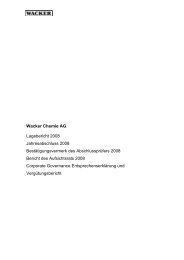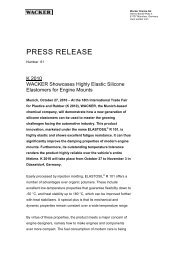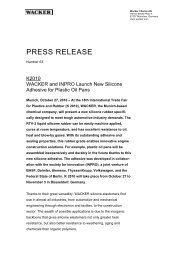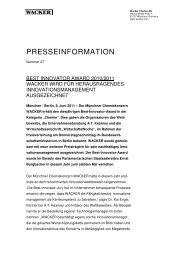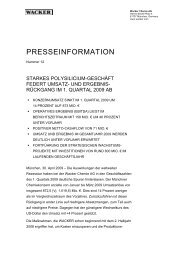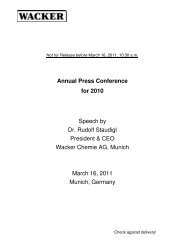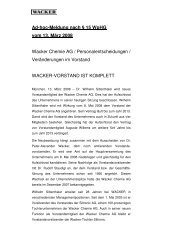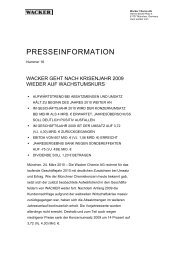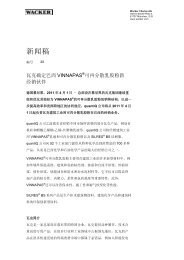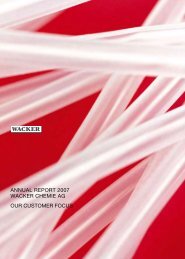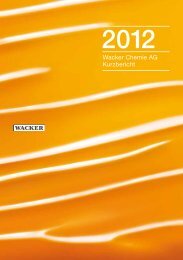SOLID AND LIQUID SILICONE RUBBER ... - Wacker Chemie
SOLID AND LIQUID SILICONE RUBBER ... - Wacker Chemie
SOLID AND LIQUID SILICONE RUBBER ... - Wacker Chemie
Create successful ePaper yourself
Turn your PDF publications into a flip-book with our unique Google optimized e-Paper software.
Additives<br />
Compared with other elastomers,<br />
silicone rubber requires few additives<br />
because the essential properties are<br />
determined by the siloxane polymer<br />
used. Thus, a finished polymer compound<br />
may consist only of polymer<br />
and filler. Particularly notable is the fact<br />
that silicone rubber is free of curing<br />
accelerators or retarders, organic<br />
plasticizers and organic antioxidants.<br />
Additives include stabilizers, masticating<br />
aids and colorants.<br />
Stabilizers<br />
Stabilizers are available for special<br />
applications in order to optimize<br />
properties such as heat and media<br />
resistance.<br />
ELASTOSIL ® pigment pastes blend<br />
especially easily and fast into rubber<br />
compounds on the roll mill<br />
Colorants<br />
Silicone rubber is generally transparent<br />
and can be colored as desired:<br />
from transparent through translucent<br />
to opaque. WACKER will supply you<br />
with suitable pigment pastes, both for<br />
liquid silicone rubber and solid silicone<br />
rubber. These pigment pastes are<br />
tailored specifically to the rubber grade<br />
in question and are easily blended into<br />
the compound while on the roll mill or<br />
via metering equipment during injection<br />
molding. It should be remembered<br />
that some additives are themselves<br />
inherently colored.<br />
You will find additional information on<br />
fillers, additives, stabilizers and colorants<br />
in section 4.3, as from page 31.<br />
11<br />
Basic Principles



